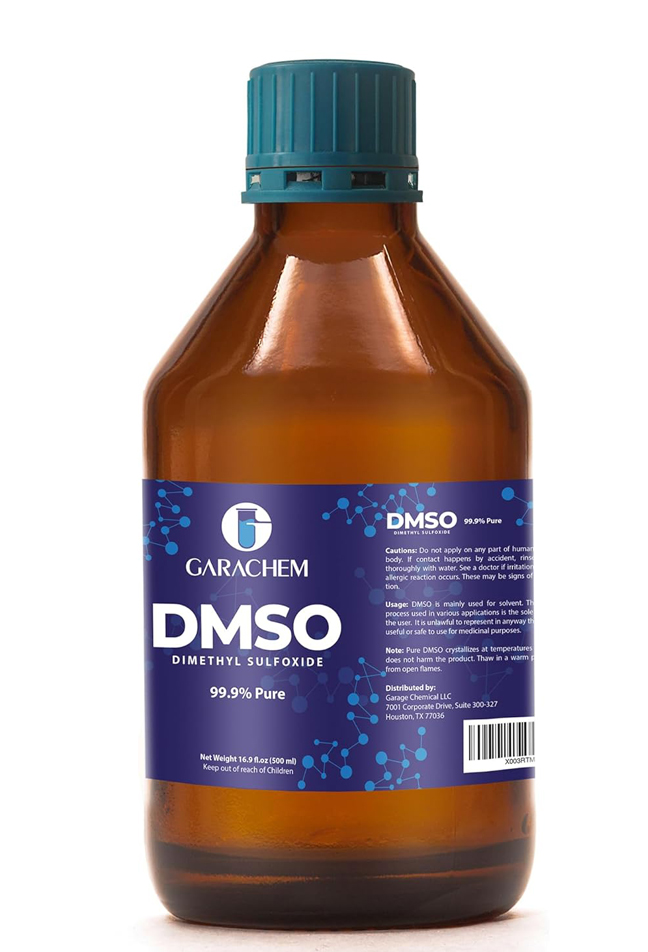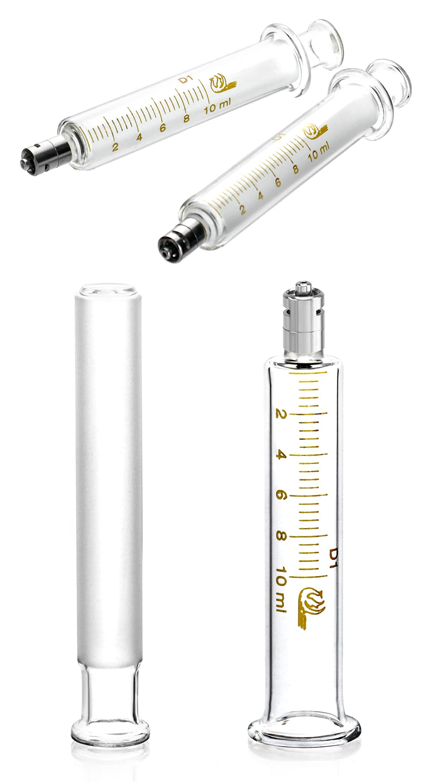DMSO, or dimethyl sulfoxide, is a compound that has captured the attention of many looking for alternative cancer treatments. It is a clear liquid with a strong garlic-type scent.
DMSO has been used successfully in the treatment of cancer for nearly 50 years. There are several properties of DMSO that make it one of the most important products known to treat cancer. It is a powerful, free radical scavenger and detoxifying agent. It is also known for its anti-inflammatory properties. It helps reduce pain and swelling, which is why it’s often used for conditions involving inflammation.
It has the unique ability to pass through body tissue and individual cells in the body, and it has the impressive ability to take other medications with it. DMSO is anti-cancer by nature, and much more so when combined with other cancer medications, such as Cesium chloride, Vitamin B17, Colloidal Silver and MMS. DMSO can be applied directly to the skin for swift absorption into the bloodstream, or it can be taken orally, but only when diluted with distilled water to ensure safety and efficacy.
DMSO’s impressive ability to deeply penetrate tissues makes it crucial in the battle against cancer. It greatly reduces inflammation and pain, making treatments more bearable for patients. DMSO is known for its ability to deliver other treatment drugs straight into the cancer cells. Studies also suggest that DMSO has the ability to slow down the spread of cancer cells. While researchers are still figuring out all the ways DMSO can be used in cancer care, its potential for easing pain, better delivery of drugs, and cancer-fighting effects keeps it in the spotlight for those looking for new ways to fight cancer.
Given its multifaceted role, DMSO continues to be a beacon of hope for all of us. Its unique properties not only offer a non-toxic approach to cancer treatment but its inherent anti-inflammatory qualities are excellent, even if only used as a stand-alone product.

What you need to know before using DMSO:
While these characteristics of DMSO are fascinatingly beneficial, it also means that DMSO can carry any harmful contaminants present on the skin into the bloodstream.
The risk associated with DMSO’s carrier properties is especially concerning with everyday substances such as clothes dye, lotions, creams, nail polish, deodorants, etc. If DMSO is applied to the skin that has been exposed to these substances, it may transport these potentially toxic chemicals directly into the body’s internal tissues. This can lead to unforeseen and potentially harmful effects, given that many products applied to the skin are not designed to be absorbed into the bloodstream.
For example, the dyes in clothing, which are safe when worn, could become toxic if carried by DMSO through the skin and into the body. Similarly, many cosmetic and hygiene products contain chemicals that are safe for external use but may pose risks if introduced directly into the body’s internal environment.
It is, therefore, crucial to ensure that the skin is thoroughly cleaned and free from any chemical residues before applying DMSO. Users should be aware of the substances they come into contact with prior to application, and consider the potential for DMSO to act as a carrier for these substances into the body – including the containers the DMSO is kept in, or the measuring devices used for DMSO. This understanding is vital for safely using DMSO, emphasizing the need for meticulous preparation and caution to avoid un-intended exposure to toxins. Only mix DMSO in a glass bowl and apply with your hands or a natural bristle brush. Do not use general plastic, rubber, metal objects or latex gloves.
To ensure the highest quality, opt for DMSO that is 90-99% pharmaceutical grade, and always purchase it in a dark brown glass bottle. This avoids the uncertainty associated with plastic containers, which may not be completely resistant to DMSO even if labelled as polypropylene or polyethylene. For safe usage, dilute the DMSO yourself with distilled water only. Distilling your own water at home is the best and most economical choice. You can do so by using one of these Distilled Water Makers. By making your own distilled water, it eliminates the risks associated with plastic water bottles, which can leach toxins into the stored water over time.
DMSO AND SYRINGES:
Should the need arise, selecting the right syringe is crucial due to DMSO’s ability to dissolve certain materials. Glass syringes are often the best option, as they are made from borosilicate glass which provides excellent chemical resistance and does not interact with DMSO. For those preferring disposable syringes, only use ones made from polypropylene or polyethylene, as these plastics can withstand DMSO without degrading. However, it’s important to ensure that the plunger and seal in these syringes are also compatible with DMSO. Materials like silicone or Viton are preferred for seals due to their robust chemical resistance. Always avoid syringes with components made from less resistant materials such as PVC or natural rubber, which can swell or break down when exposed to DMSO. When using DMSO in a disposable syringe, it’s best to not let the DMSO sit in the syringe for an unnecessary length of time.
To Recap : Proper Preparation and Usage
To harness the full potential of DMSO while ensuring safety, it is essential to follow proper preparation and usage guidelines:
- Purity is Critical: Always opt for 90-99% pure DMSO to ensure the product is free from harmful impurities. High-grade DMSO allows for precise dilution tailored to specific needs.
- Dilution Practices: Only dilute DMSO with distilled water to avoid introducing any contaminants. This is crucial because DMSO will transport any impurities from the water directly into the bloodstream or across cellular membranes.
- Storage: Like Vitamin B12, which is best stored in dark brown glass for maximum UV protection to prolong its life without adding any nasties, DMSO should also be stored in appropriate containers to maintain its purity and effectiveness.
- Application Method: For topical applications, apply DMSO to clean, dry skin. When ingesting orally, dilute only with distilled water.



